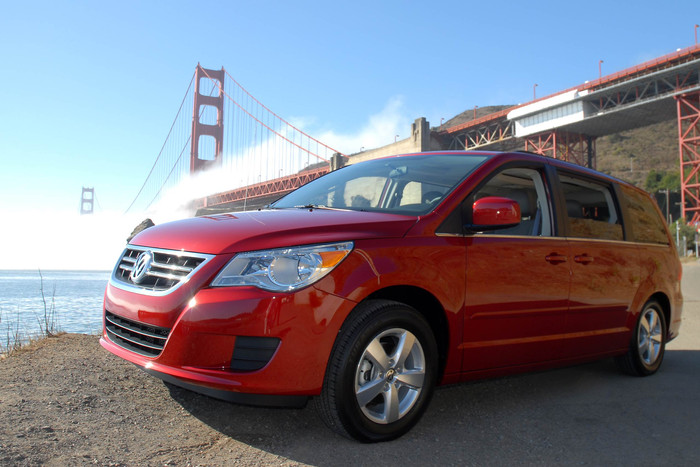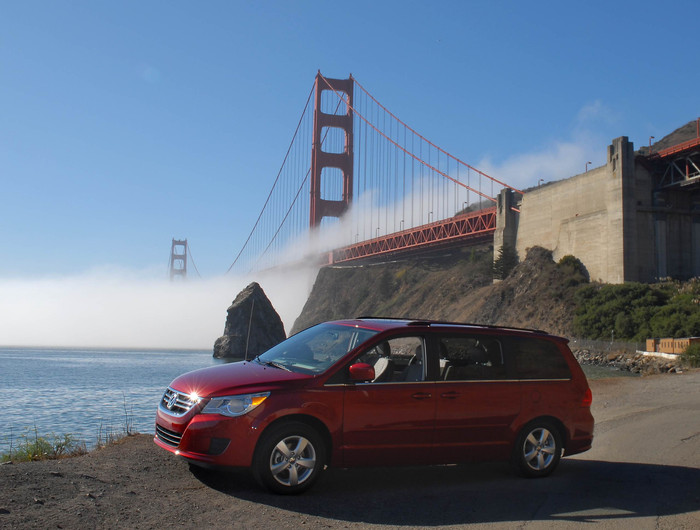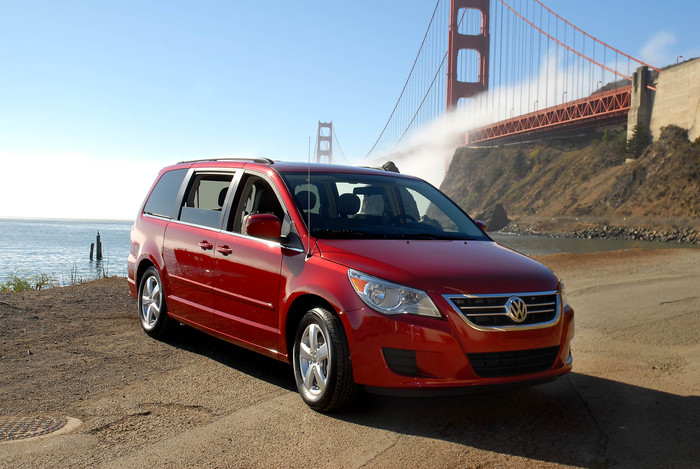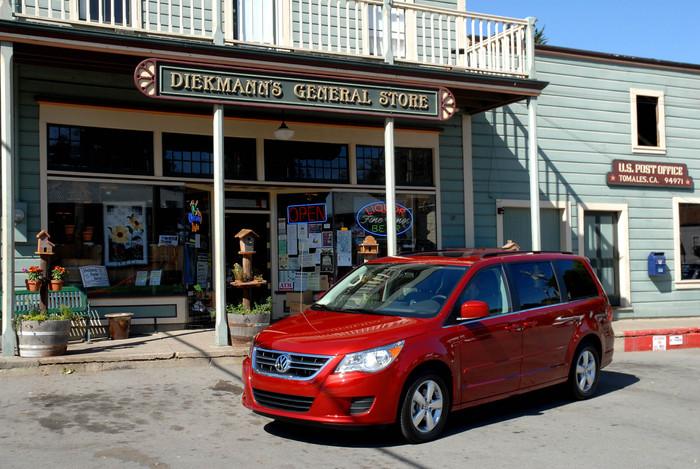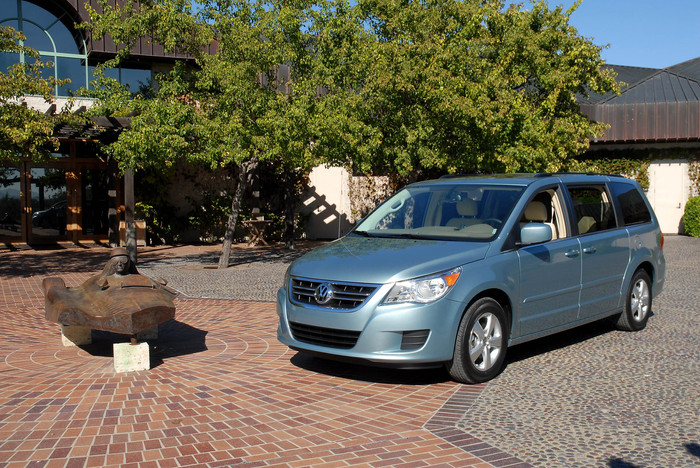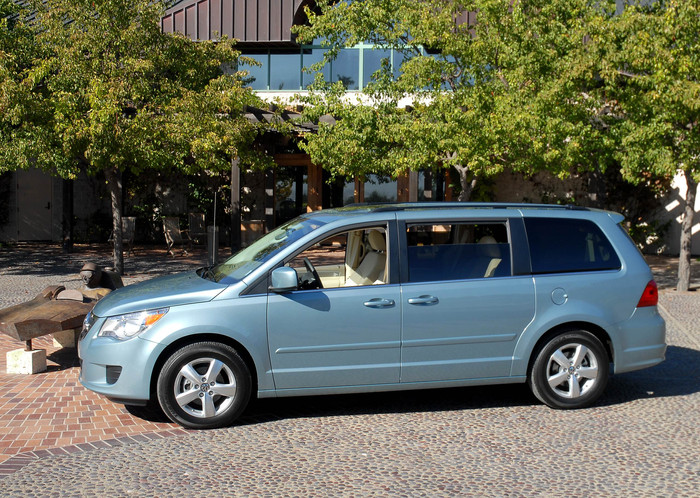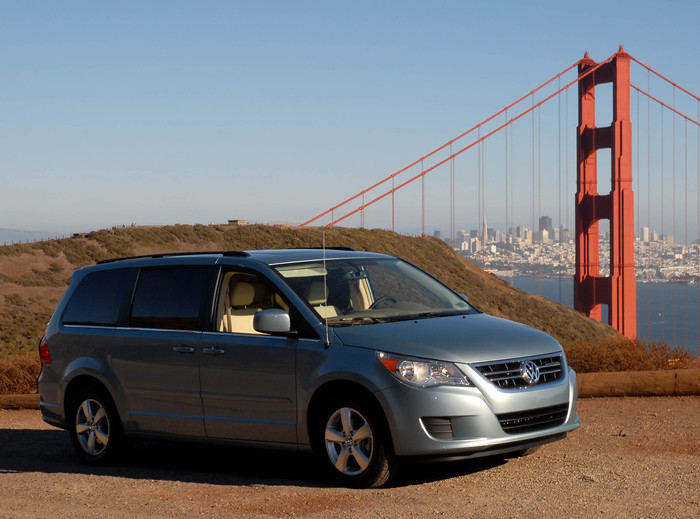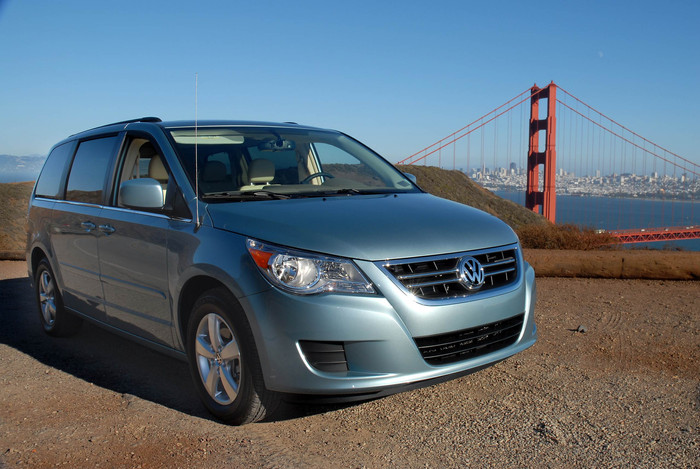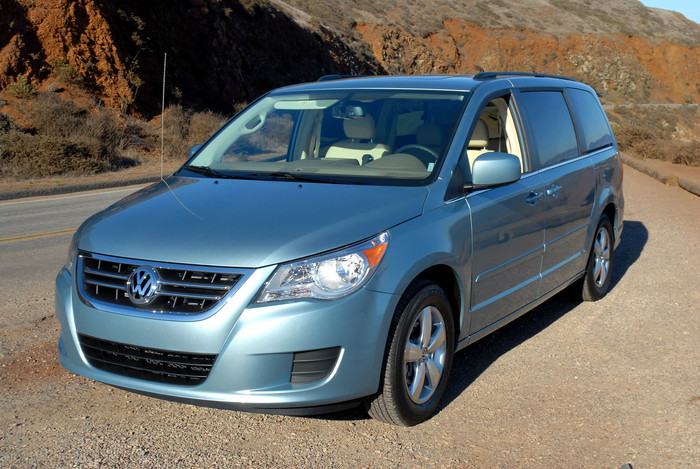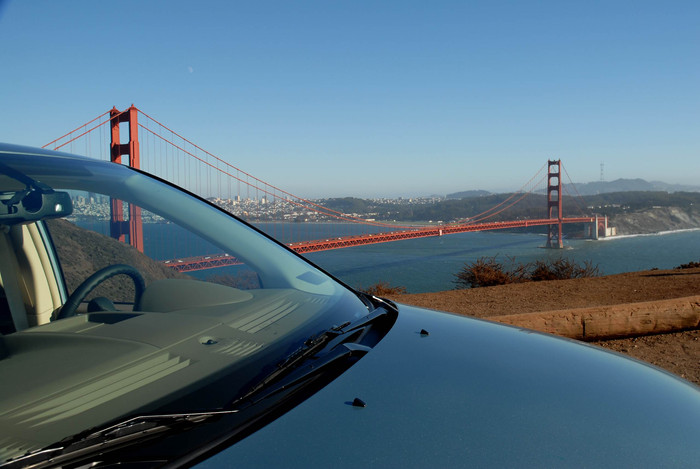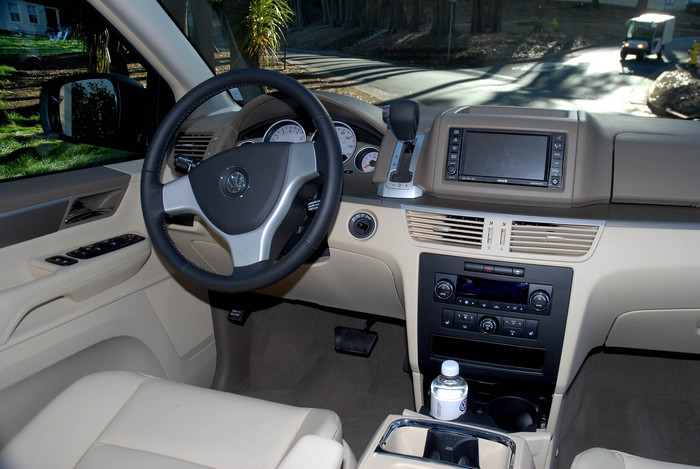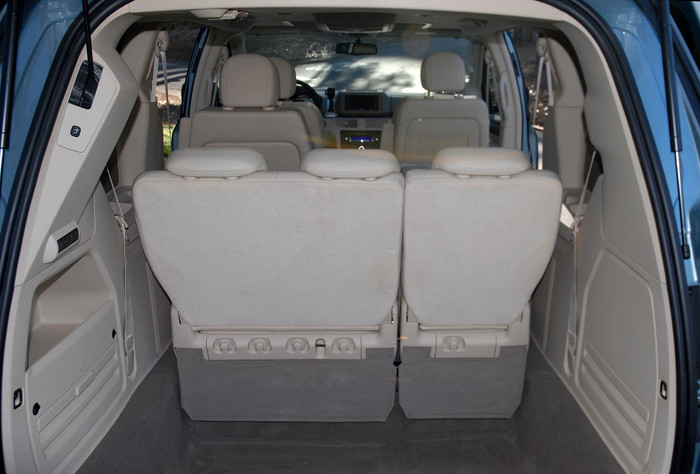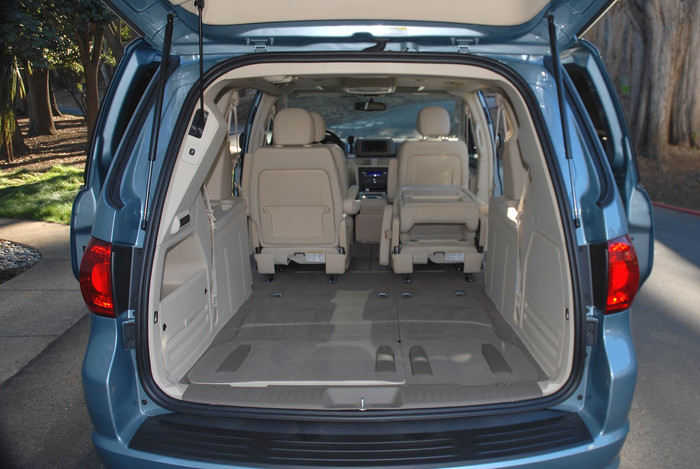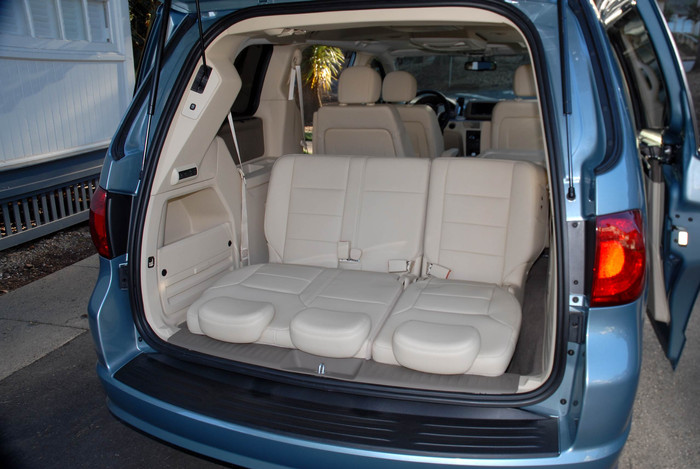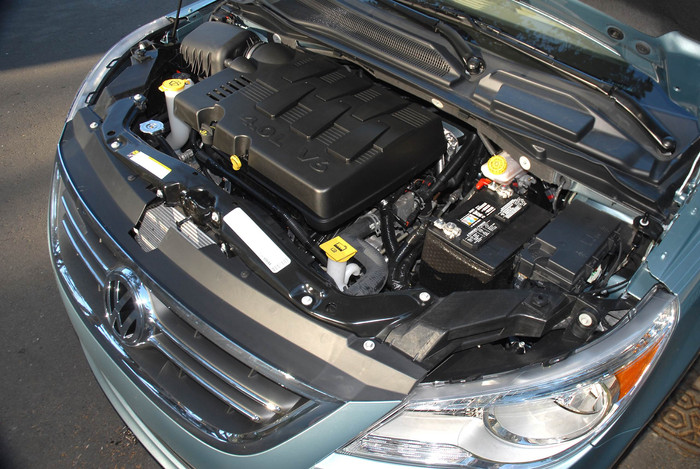

Review: 2009 Volkswagen Routan
When we awoke to the sounds of reveille blowing across old Fort Baker under the Golden Gate Bridge at the launch of the new Volkswagen Routan, we had to wonder why it took Volkswagen so long to wake up to the need for a minivan√'¬†- the safe, practical, all-purpose hauler of families, hockey teams, and Costco shopping trips√'¬†- in their lineup. We also wondered why, when VW finally decided to round out their American product line, the company that invented the microbus went to Chrysler for the new Routan.
Regardless, that's what they did and for anyone with a active, growing family, the result is worth considering.
What is it?
Though there's no mention of Chrysler in VW's sales literature, their presentations at the recent press introduction at Fort Baker, built in 1906 and now reincarnated as Cavallo Point Resort, didn't try to gloss over the fact that the Routan is a direct derivative of the Chrysler Town & Country and is manufactured in the Chrysler plant in Windsor, Ontario, Canada. Nevertheless, they still call the Routan (the name combines the English word "Route"¬Ě with the German suffix "an"¬Ě used on vans in Europe) a "stylish European alternative to the minivan."¬Ě
So how does VW justify describing a Chrysler product that is manufactured in Canada, "European?"¬Ě Though the presenters spent considerable time describing how their engineers and stylists made significant changes to body panels, especially on the front and rear, upgraded the interior, and evaluated every single mechanical component on the Chrysler minivan before finalizing the design of their version, after driving the Routan, we'd boil the significant differences down to one word: Handling
The VW development engineers noted that they upgraded the shock absorbers, springs, sway bars, wheels and tires of the Chrysler vans in order to improve handling, and the results are certainly worthwhile. Though no driver is ever going to confuse the handling of the Routan with one of VWs sporty sedans, much less a real sports car, this is definitely the best-handling minivan we've ever driven.
What's it up against?
With the improvements in handling, VW has addressed the one real weakness in the otherwise solid capabilities of the Chrysler Town & Country. Combining their suspension changes with cosmetic improvements on the interior, VW has created a product that can easily go headlamp-to-headlamp with the Honda Odyssey, the current product leader in the minivan market.
Any breakthroughs?
Suspension improvements would hardly qualify as "breakthroughs"¬Ě and in other major respects, the Routan is pretty much all Chrysler under the skin. Two engines are available, both of which are Chrysler products: the base S model, and the slightly upgraded SE come with the 3.8L V6, producing 197 horsepower and 230 pound-feet of torque. On the top-of-the-line SEL, the engine is the larger 4.0 liter V6 with 253 horsepower and 262 pound-feet of torque. All three models are equipped with a six-speed automatic transmission.
Oddly, the Routan isn't available with Chrysler's innovative Stow 'n Go seat system - a breakthrough in its own right, though one lacking here.
What does it look like?
Volkswagen has gone to some lengths to give the Routan a look that is distinctly different from the Chrysler Town & Country, and that fits comfortably within the VW family. In particular, the grilles have the same two-scoop shape as other cars in the VW line-up, crested by the dinner-plate-sized VW logo mounted on two chrome bars.
The double grille openings flow smoothly into the feature lines of the subtle clamshell hood, flanked by the vaguely menacing slitty eyes of the headlamps. The only slightly discordant design touches on the front are the fake brake scoops on either side of the lower grille opening, which look as if they were added on when someone realized that there was too much unadorned metal below the headlamps.
From the A-pillars back, the vehicle is just minivan-ish, though fortunately the designers resisted the temptation to add any unnecessary feature lines, rocker panels, or other distracting additions. The net effect is quite handsome, complementing the equally unadorned rear end of the body.
And on the inside?
In restyling the interior to offer an upscale, European feeling, VW designers had to work around fixed points like the Chrysler transmission control lever that projects awkwardly out of the dash (though we must admit, conveniently within reach) next to the steering wheel. Nevertheless, by restricting their palette of colors and materials to charcoal and brushed chrome contrasting with two shades of lighter vinyl, with matching leather in the SEL, the designers have definitely created a Bauhaus, form-follows-function, look on the interior.
We were very impressed by the minimalist design of the center stack, integrating the audio system, heating and air-conditioning controls, and optional navigation system with a minimum of knobs and buttons. The design is also intuitively ergonomic; when we fished for a button while trying to keep our eyes on the road, we always seemed to find the control that we wanted without any fuss or bother.
As we've already mentioned, VW decided to forego the neat Stow 'n Go seating and stowage system that Chrysler introduced in the Town & Country a few years ago, and the very new rotating captain's chairs and table that was this year's new feature from the Chrysler studios. Maybe Chrysler felt that it had to hold onto something that it could still call its own even while selling a portion of its birthright to feed its depleted coffers.
Nevertheless, VW still came up with a very neat seat design in the rear that allows the removable middle row captains' seats to fold forward while the split seats of the rear row fold neatly under the flat floor separately or together to haul awkward cargo. At soccer practice or on an impromptu picnic, the third row can be folded backwards to form a reasonably comfortable seating bench under the shade of the tail gate.
Though the S and SE models use a system of numbered straps to pull to make this system work, the real delight was in the SEL, where all it would take is a poke from the elbow of mom carrying baby and two sacks of groceries to cause the seats to flip forward and back and then drop snugly under the floor. Maybe Brooke Shields is right and young couples would have a baby just to enjoy the convenience of the Routan.
But does it go?
After rolling out of bed in one of the remodeled officers' quarters of Fort Baker to the strains of reveille from the nearby Coast Guard station sounding over the parade ground, and tucking into a sumptious breakfast at the lovely restaurant in the erstwhile headquarters building, we were more than ready for a morning of presentations and an afternoon of driving in the Marin Headlands.
It was a real privilege to be among the first guests to enjoy the recently opened Cavallo Point Resort, sympathetically converted into a luxury spa and resort by the same owners who created the Post Ranch Inn in Big Sur, California. The Cavallo Point setting, with the elegant old buildings looking out onto a vista that included the Golden Gate Bridge the San Francisco skyline and San Francisco Bay, is unparalleled. The experience of staying there could easily be the high point of a visit to San Francisco, a city that doesn't get topped easily.
But back to our drive. Though the minivan is not small, it still managed to handle the varying topography and tight curves of the backroads that took us between fields where herds of cattle grazed and over the hills to the Marin coast. In comparison to other minivans we've driven, the Routan corners confidently with limited body roll, and yet is able to swallow up the bumps in the road with equanimity.
Though power is adequate, never were we tempted to drop the hammer to enjoy the rush of acceleration, as we might have done in a sporty sedan; instead we enjoyed the changing scenery. We even were aware enough of the rural surroundings to stop to help a calf on the road get back through the fence to join his herd, and to take a few minutes to visit the Keller Winery with its statue of Juan Manuel Fangio in the courtyard.
We could easily imagine a young family taking trips in this minivan just for the pleasure of driving, with the probably vain hope that views of the countryside might even tear the kids away from the optional rear seat entertainment system.
Why you would buy it:
You're got young children and need the space for six passengers, know enough about safe driving to expect your rolling kiddy cocoon to actually respond predictably to your driving input, and prefer dealing with a Volkswagen dealer rather than a Chrysler dealer.
Why you wouldn't:
You really don't need a minivan, or you still believe the myth that a fuel-guzzling sport-ute is a safer family vehicle to drive just because it's taller and bigger than anything else on the road.
What we drove:
2009 Volkswagen Routan SE base price, $29,600; not available in California and ten other CARB-spec states)
Destination,
2009 Volkswagen Routan SEL base price, $33,200; as tested, $38,775.
Rear seat entertainment, $3,100; Navigation system with back-up camera, $2,475.
Words and photos by Gary Anderson.
Cavallo Point Resort



